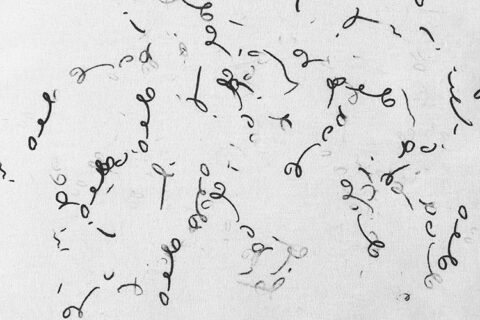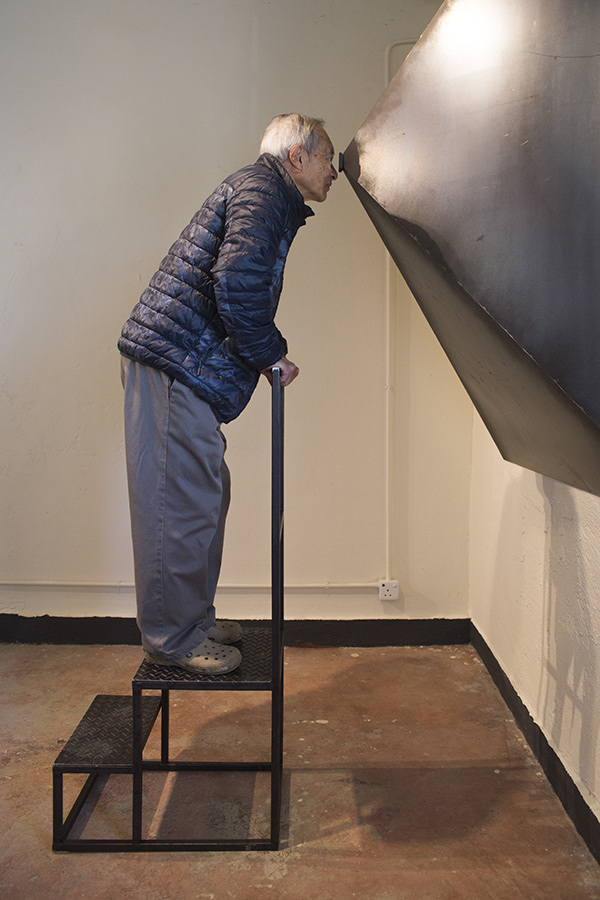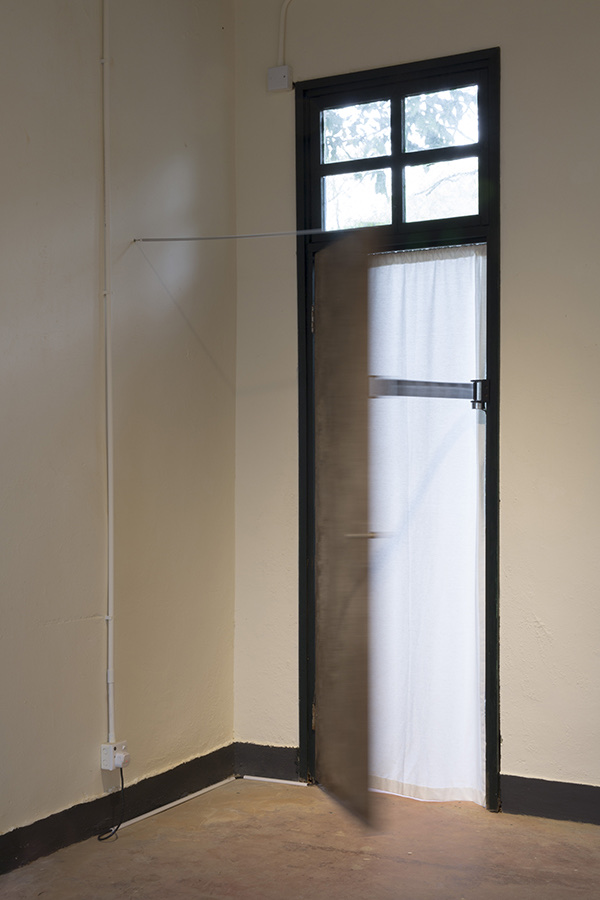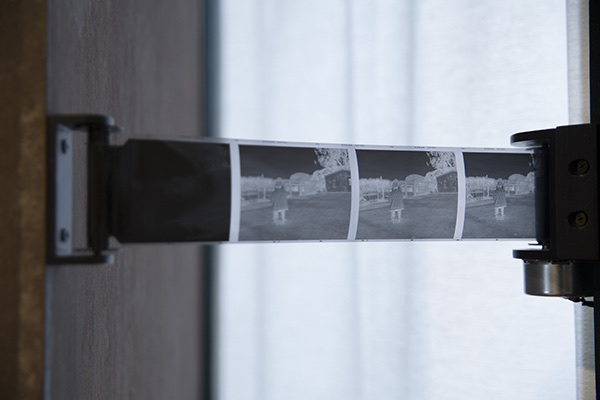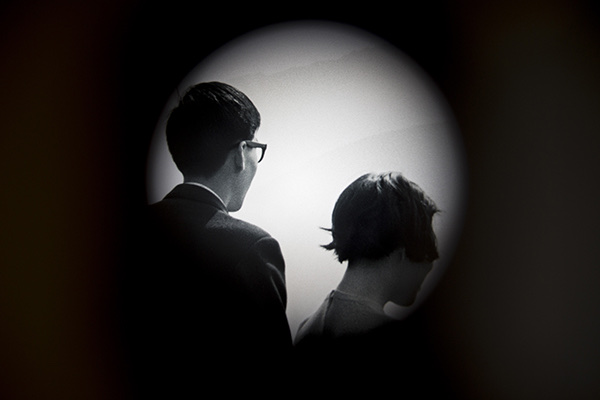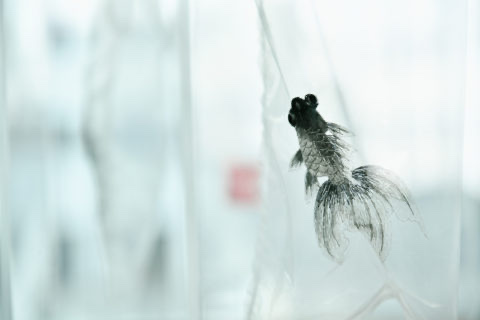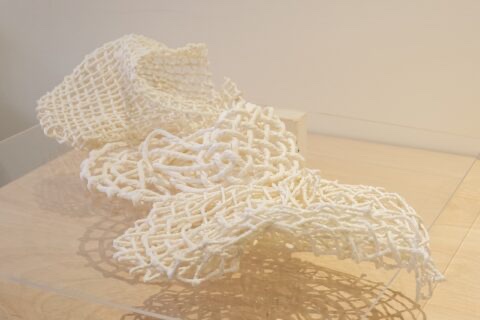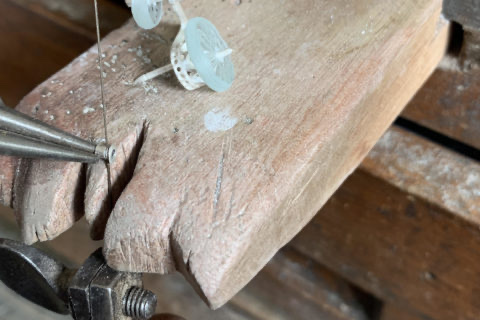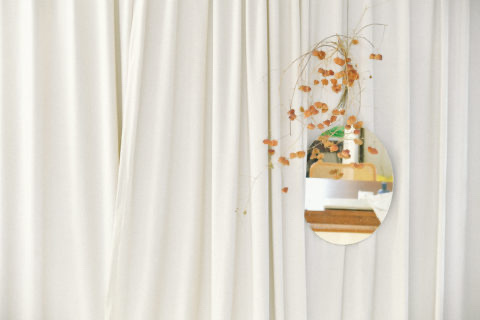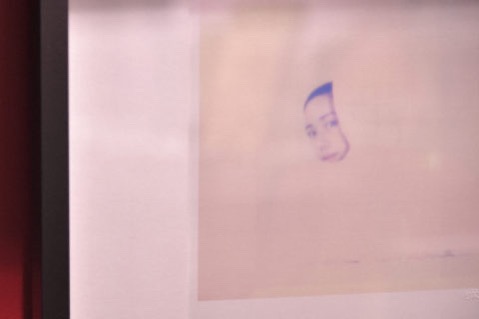我們都是由記憶組成。記憶讓我們是「生而為人」的天賦。記憶儲存在硬件中、在筆記本裡、也在腦海中。於是我們都像座流動的歷史文獻庫,每天遇到的人與事都存進腦海中,記憶跟周圍環境形成獨特的角度。
攝影師翟偉良長居於荃灣川龍,是那裡的外姓村民。對川龍這個地方、從自然生態到人脈關係,都瞭如指掌。藝術家梁志和來到川龍,這裡不乏山川人情故事,但他特別對翟偉良這座「活動歷史資料庫」感興趣。梁志和將翟偉良鏡頭下的時光歲月以藝術手法編織出川龍故事。川龍位於大帽山上荃灣之北,因為大帽山的充足水源,這裡有山水茶樓及甜美的西洋菜。自十九世紀已經有村民居住,那裡原居民都姓「曾」,是傳統的客家村落。鄉村大抵都逃不過被遺忘的命運,川龍的貫文學校已荒廢,西洋菜的出產也是僅有。可幸還有山水豆腐花,村口的茶樓還有熱騰騰的义燒飽。
藝術家來到川龍創作,不單是城鄉的連結,也是為川龍打開記憶之門,將過去的人事帶到現在。梁志和將翟偉良的個人回憶帶來現已荒廢貫文學校,在當下的空間交織過去的時間。翟偉良小時候在學校操場上的一張老照片,許多年後梁志和找來這照片的底片,在學校的一道課室門之間做了一個名為《The Film》的裝置,底片在課室門之間來回卷動,門的一開一合,時光也彷彿在那一瞬從過去到現在之間來回轉動。回憶是個人也投射到環境,翟偉良一幅在1966年拍下兩名友人從川龍遠眺沙田,梁志和將照片裝置在課室的窗戶,並裝上金字塔型的取景器《Viewfinder》,每次只能讓一人往窗外看風景,而窗外沒有當下的風景,只是翟偉良的個人回憶。
他人的回憶在觀眾的腦海中留下印記。我們大抵都是由各種各樣的回憶拼貼而成。
We are all made up of memories. Memories are what make us humans. Memories are stored inside physical objects, in notebooks, and also within our heads. That is why we are like a mobile history library, and we store in our brains the people we meet and things that occur every day. Memories, together with the surrounding environment, form a unique angle.
Chak Wai Leung, a photographer, has lived in Chuen Lung village in Tsuen Wan for a long period of time, but he bears a different surname from the other villagers there. He knows almost everything about Chuen Lung, from its natural habits to human connections. When Leung Chi Wo came to visit Chuen Lung, he found a wealth of heartwarming stories woven within the hills and rivers, but what he found particularly intriguing was Chak Wai Leung, as a “mobile history library”. Using artistic methods, Leung wove moments and passage of time under Chak’s lenses into a story about Chuen Lung. Nestling in the Northern part of Tsuen Wan, within Tai Mo Shan, Chuen Lung boasts countryside dim sum houses and delicious watercress thanks to ample water supply in Tai Mo Shan. The earliest residents of this traditional Hakka village date back to the 19th century, with all indigenous residents there surnamed Tsang. Most villages fail to escape the fate of being forgotten, and here in Chuen Lung, Koon Man School is now deserted, and only a small amount of watercress is still being harvested here. Fortunately, one can still find tofu pudding there, and the dim sum house at the mouth of the village still serves steaming hot BBQ pork buns.
When artists pay visits to Chuen Lung for their arts creations, it is not simply about connecting the urban and the countryside, but also about opening the village’s door of memories, bringing events and people in the past to the present. Leung has brought Chak Wai Leung’s personal memories back to the now defunct Koon Man School, weaving together past moments in the space at present. Leung Chi Wo found the film of an old photograph taken many years ago, with a little Chak in the school playground. Using this film, Leung has made an installation called The Film at a classroom door, in which the film is being rolled, and as the door is being opened and closed, it is as if time itself was rolling back and forth between past and present in that instant. Personal memories have also been projected to the surrounding environment. There is a photo taken by Chak in 1966, in which two of his friends look at Sha Tin at the distance from Chuen Lung. By installing the photo along with a viewfinder, which is shaped like a pyramid, on a classroom window, Leung lets one person look out from the window at one time, and out there, one cannot see the view at present but only Chak’s personal memories.
Others’ memories are etched on viewers’ mind. After all, we, for the most part, are formed by a collage of various memory pieces.
